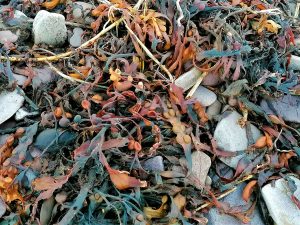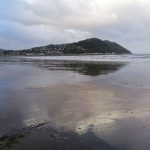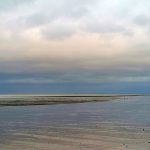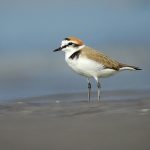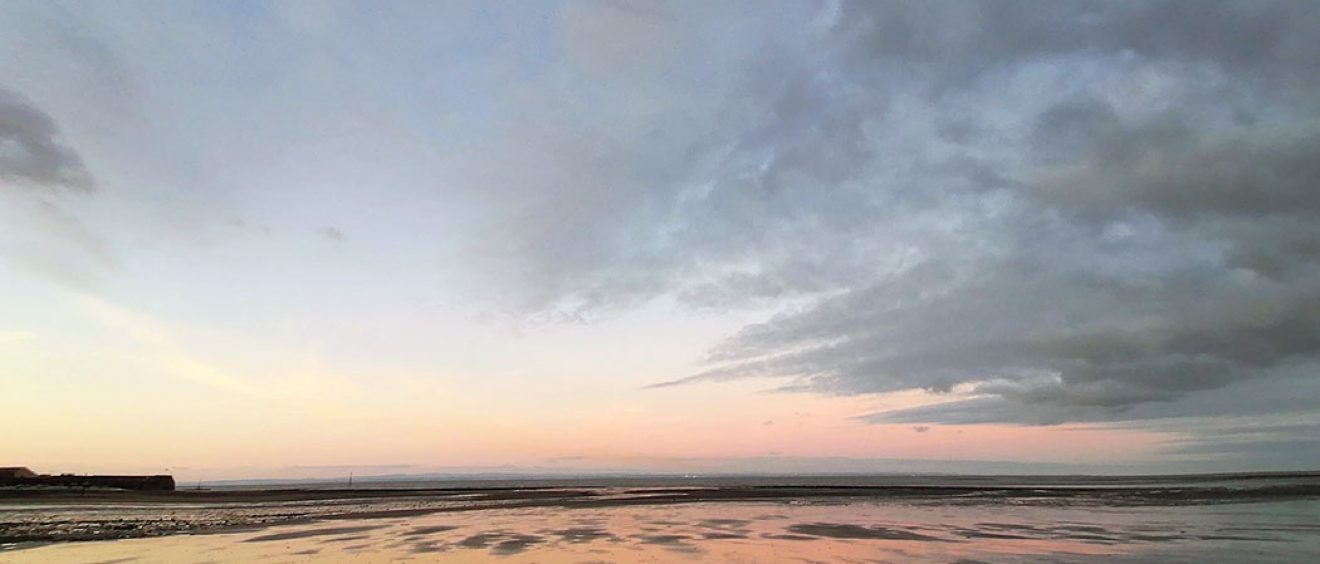
A Winter Walk by the Sea
Winter warmth and wildlife from West Somerset’s shoreline with Elevate artist David Davies.
Let the shoreline keep us as children
where we breathe shapes into the foam
and soak our laughing hemlines in the salt
giddy at the horizon that childhood has folded down
collecting pebbles – gifts,
each one with a name.
Birdlife along the West Somerset shoreline fascinates me. The huge tidal range in the Severn estuary helps make the mudflats and sandflats which, in turn, create outstanding wildlife habitats for shoreline birds. Estuary mud, reflecting stunning silver light, contains enough worms and shellfish to attract and feed these long distance visitors.
So what makes shoreline birds so interesting for me? Well, a bit like me on my winter walk perhaps, these birds seem like practical survivors making the most of this wintery sparseness. They also occupy the spaces where my eye is drawn towards… the tideline and open sea. The beachcomber in me is a bit like a shorebird foraging… connecting to some instinctive habit of noticing and responding to patterns.
Where the earth meets the sky,
the sand is a million silvers and the air is gold
and the tide smooths our memories with its hands, whispers
there now,
it will be alright.
Spotting these shorebirds feels special – often they are camouflaged by the silvery silt, rocky shelves and sparkling light and can easily remain magical, unseen company. Apart from the variety of shorebird characters, my thoughts turn to migration and the huge distances some of them travel to be our summer and winter guests.
Sunlight, bright on the water
becomes the scales on a giant fish.
splits silver light into white light, into transparency.
The West Somerset shoreline winter guests this year include: – The tall, prehistoric-looking grey heron (probably resident all year in the region) who stands silent and statue-like on the edge of tidal pools, patiently contemplating its next meal. The grey heron in flight (often accompanied by its loud, harsh “frarnk” call) with slow-flapping wings and long legs stretched out behind makes a sight not to be missed.
My favourite is the scarce Kentish plover. This tiny shorebird, which weighs only around 40 grams (about 1½ ounces or a heaped tablespoon of flour!), has a subtle black-grey darted neck ring and eye stripes and black forehead, gorgeous sandy brown mantle, back and wings and all this contrasted with a snow-white underbody. This robust looking shorebird forages on the shoreline with subtly beautiful and engaging movements: – looking ahead, followed by short runs, stopping, turning, walking, then looking again – like a graceful dance.
Studies show the Kentish plover to be versatile, using weather cues of light, wind and rain to maximise foraging potential and it uses its large sensitive eyes for night time foraging too. Breeding pairs build their nest in frugal hollows scraped in open ground on the stony edges of beaches, often near brackish water pools. Beach nesting makes Kentish plovers vulnerable to disturbance from beach users and is why recent sightings are so encouraging.
The Kentish plover has a wonderful delicate, soft call, heard as “too-eet”. – Lovely!
[*Kentish Plover ‘Charadrius alexandrinus’ at Akshi Beach, Maharashtra, India. Photograph by Shantanu Kuveskar. File licensed: https://creativecommons.org/licenses/by-sa/4.0/ deed.en]
More from David and the Elevate artists
Download ‘Elevate your mood’ Issue 5 (pdf)
Send us your contribution
We love to include some of your own reflections in future posts and in our monthly print edition ‘Elevate your mood’ or quarterly printed tabloid ‘Take the time’. Why not write a few lines, try a poem or send us picture on the general theme of spring and new beginnings? Email to ArtCare or send to ArtCare, Block 29, Salisbury District Hospital, Salisbury SP2 8BJ.

